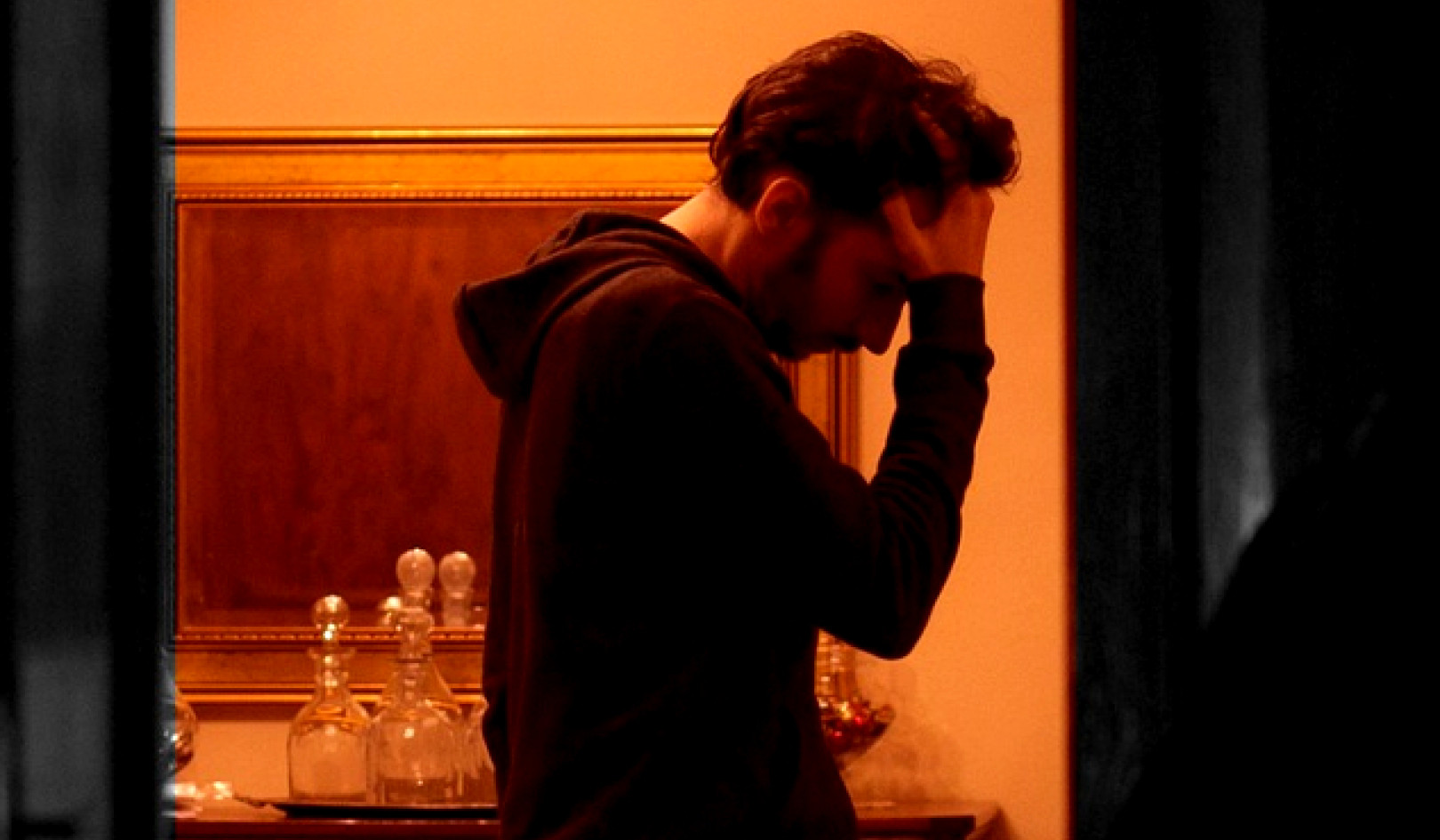 Getting a baby to fall asleep can be exhausting. Marcos Mesa Sam Wordley/Shutterstock.com
Getting a baby to fall asleep can be exhausting. Marcos Mesa Sam Wordley/Shutterstock.com
For thousands of years, mothers have sung lullabies to help their babies and children fall asleep. In more recent times, gadgets and devices have been invented and marketed to help the tired child – and weary parent.
One of these devices has been linked in recent years to the tragic deaths of 32 babies. Fisher Price recently recalled its Rock ‘n Play Sleeper after the deaths.
The popularity of the device and others shows the widespread desire for help getting babies and children to sleep. Consider that nearly 30% of young children experience sleep problems that warrant clinical attention.
As behavioral sleep medicine specialists, we completed postdoctoral training in assessment and treatment of behavioral sleep problems in children and teens. Our knowledge of pediatric sleep research suggests children won’t outgrow sleep problems, and sleep problems may even worsen over time. Yet children with sleep problems are not destined to be sleep deprived forever. There are sleep training methods for babies and young children that can work.
Sleep, my child … so I can, too
 A mother rocks her baby to sleep. FamVeld/Shutterstock.com
A mother rocks her baby to sleep. FamVeld/Shutterstock.com
We sleep doctors have seen that sleep problems correlate with a host of daytime problems, such as overactivity and attentional impairments, poor school performance, and excessive moodiness and irritability. As many as 20% of adults experience persistent insomnia, and many can trace their sleep problems to childhood.
The most common sleep problems in young children are difficulties falling asleep at bedtime, disruptive nighttime awakenings, or needing special conditions to fall asleep, such as the presence of a parent. These problems, in turn, are likely to cause parental stress and next-day impairments for the entire family.
People often equate sleep with “tiredness” and “fatigue.” In fact, sleep is its own process. It is an interaction of sleep-promoting brain chemicals and consistent daily rhythms of wake and sleep produced by bright light exposure in the morning. The bright light signals suppression of the sleep-promoting hormone melatonin.
Darkness, on the other hand, signals the brain via direct connection from receptors in the eye: “Produce melatonin; Go to sleep.” At the end of the day, there is nothing parents can do safely to make their children sleep. But there are many things parents can do to teach their children the skills necessary for good sleep.
Insomnia responds well to a number of behavioral treatment interventions.
From crying it out to teaching a skill
 Timed checks on a baby can be more effective than constantly watching him or her. Elnur/Shutterstock.com
Timed checks on a baby can be more effective than constantly watching him or her. Elnur/Shutterstock.com
Many families have heard of the conventional “cry it out” approach – formally known as unmodified extinction. Although research supports the effectiveness of this method with infants and young toddlers, it is our clinical experience that few parents find this approach bearable. Furthermore, “cry it out” is not intended for use with older toddlers or preschool-aged children.
Instead, a method called graduated extinction is the mainstay of current behavioral intervention for bedtime resistance and sleep association problems. There are several approaches, used from toddlerhood through middle childhood, consisting of techniques such as timed checks, or the “walking chair.”
In timed checks, parents enter and exit the bedroom on a strictly timed schedule. This breaks the connection between problem child behavior, such as crying and calling out, and parental response.
The walking chair method involves the parent moving further and further from the child’s bed until outside the bedroom door and, eventually, back to the parent’s own bed. Our clinical experience is that sometimes a combination of these methods is needed.
Although these procedures emphasize the importance of limiting attention to problem behavior, they differ from unmodified extinction by providing attention for positive sleep behaviors, such as lying quietly in bed.
Consider a child who has a longstanding history of needing parental presence to fall asleep. The child can be said to have a skill deficit of being unable to fall asleep on her own. Learning to fall asleep can be likened to learning to ride a bike, first with training wheels, then without, and then without the parent steadying the handlebar. Little by little, the parent takes away her hand, and the child learns balance and eventually pedals away on her own.
With sleep training, the parent teaches the child to practice behaviors that are compatible with sleep, such as lying still and quiet in bed with their head on the pillow. When the parent enters the room every five minutes to say, “Good job staying in bed and lying so still” and offers a quick kiss and pat on the back, the child knows exactly what is pleasing to the parent. Once the child learns to lie quiet and still in bed, sleep physiology takes over.
Healthy sleep now, healthy sleep in adulthood
Many parents may incorrectly believe that sleep training is damaging to the parent-child relationship or attachment bond. In fact, we argue that healthy attachment bonds are formed by high rates of reinforcing parent-child interaction such as those used to teach behavior that is compatible with sleep.
Sleep training at younger ages may protect against more serious sleep problems later in life. For instance, at the onset of puberty, most teens experience a natural biological shift that causes them to prefer later bedtime and later wake time.
For most, this preference does not subside until young adulthood. If this natural shift in bedtime and wake time is paired with already problematic sleep habits learned in childhood, the results can be serious. Kids can get behind at school because they fall asleep in class, or they may become truant. Furthermore, when teens attempt to self-correct problem sleep schedules, they often find themselves unable to fall asleep easily at an appropriate bedtime. Many end up spending excessive time awake in bed, placing them at risk for chronic insomnia that could persist well into middle age.
So, that conversation that you are thinking about having with your child’s pediatrician: Have it. Your pediatrician also can help you decide when it might be time to seek specialty care with a behavioral sleep specialist or sleep medicine physician.
If your child doesn’t sleep, don’t lose hope. Change is possible. You already have taught and will continue to teach your child many important lessons in life. With persistence, good information and willingness to try new things, healthy sleep habits and a good night’s sleep are within reach.
About The Authors
Ryan Anderson, Researcher, Child Psychology, University of Pittsburgh and Hannah Ford, Researcher, pediatric sleep disorders, University of Pittsburgh
This article is republished from The Conversation under a Creative Commons license. Read the original article.

Related Books:
Here are 5 non-fiction books on parenting that are currently Best Sellers on Amazon.com:The Whole-Brain Child: 12 Revolutionary Strategies to Nurture Your Child's Developing Mind
by Daniel J. Siegel and Tina Payne Bryson
This book provides practical strategies for parents to help their children develop emotional intelligence, self-regulation, and resilience using insights from neuroscience.
Click for more info or to order
No-Drama Discipline: The Whole-Brain Way to Calm the Chaos and Nurture Your Child's Developing Mind
by Daniel J. Siegel and Tina Payne Bryson
The authors of The Whole-Brain Child offer guidance for parents to discipline their children in a way that promotes emotional regulation, problem-solving, and empathy.
Click for more info or to order
How to Talk So Kids Will Listen & Listen So Kids Will Talk
by Adele Faber and Elaine Mazlish
This classic book provides practical communication techniques for parents to connect with their children and foster cooperation and respect.
Click for more info or to order
The Montessori Toddler: A Parent's Guide to Raising a Curious and Responsible Human Being
by Simone Davies
This guide offers insights and strategies for parents to implement Montessori principles at home and foster their toddler's natural curiosity, independence, and love of learning.
Click for more info or to order
Peaceful Parent, Happy Kids: How to Stop Yelling and Start Connecting
by Dr. Laura Markham
This book offers practical guidance for parents to shift their mindset and communication style to foster connection, empathy, and cooperation with their children.

























